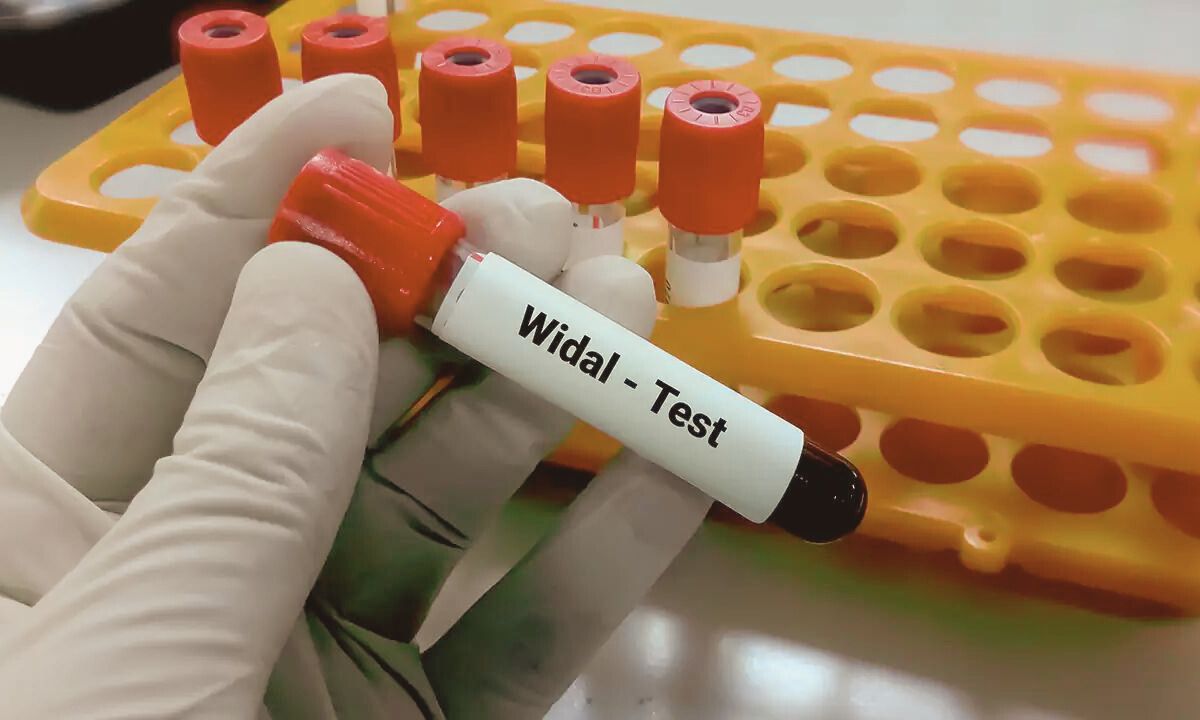Widal Test is a Serological diagnostic tool, Widal test is done to detect Typhoid fever, a bacterial infection caused by Salmonella.
Typhoid fever is caused by the bacteria salmonella, the bacteria affects the digestive system of humans. It is mainly caused by the contamination of food and water
Principle of Widal Test
The Widal agglutination test is based on the principle of agglutination, which is the clumping together of particles in the presence of antibodies. The test uses two types of antigens, the O antigen, and the H antigen. On infection, these antigens trigger the body to produce specific antibodies against the antigen of Salmonella spp. The Widal test analyses the interaction between these antigens and antibodies found in the blood samples of the patients.
The procedure of the Widal Test Step-by-Step
Widal Kit Test
- Collect the patient Blood sample Aseptically and centrifuge it to take out the serum
- Add one drop of a serum sample to each well (circle on Glass slide) to “O”, “H”, “AH”, and “BH”
- Add the “O” Antigen to the “O” Circle, the “H” Antigen to the “H” Circle, the “AH” to the “AH” Circle, “BH to the “BH” Circle
- Mixed well using the plastic sticks for each circle. Use separate sticks for a separate circle to avoid contamination
- Observe agglutination within 1 minute under light
- Saline samples were used as a Negative control and Positive control was provided with the kit
- A positive sample in “O”, “H”, “AH”, and “BH” should be screened further with the same antigen for quantitation of titer by a progressive dilution Method

Widal Test in Microbiology
- Take 8 tubes for each antigen suspension and level them 1 to 8. and one positive and one Negative control.
- Pipette 900 ul of saline solution to the first tube and 500 ul of saline solution to the remaining tubes from 2-8.
- Add 100ul of serum samples to tube no 1 and Mix properly. the final volume on Test tube no.1 is 1000 ul. Transfer 500ul of diluted sample from tube 1 to tube 2 and mix well and transfer 500ul of diluted to the next tube continue the serial dilution to the remaining tubes till tube number 7 and tube number 8 are used as control using the blank solution.
- The dilution of serum samples achieved are 1:10, 1:20, 1:40, 1:80, 1:160, 1:360 and 1:640
- Add 500ul of respective Antigen to each tube and mix properly
- cover the tubes using a cotton plug or tube cap
- Incubate overnight at 370 C
- Observe the tubes for agglutination
Result and Interpretation
- If a person has a salmonella infection it shows agglutination on the slide that can clearly be seen by our naked eyes.
- Therefore, the formation of agglutination indicates the widal test is positive which means the presence of an anti-salmonella antibody in the test sample.
- No agglutination indicates the widal test is negative which means the absence of an anti-salmonella antibody.

